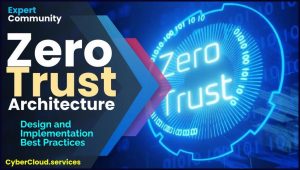General Motors’ Zero Trust Journey: Why Identity Protection Was The Key
By connecting to the silos of the enterprise identity infrastructure, Silverfort unifies identity security across all on-prem and the cloud environments.
 In a Zero Trust model, organizations must assume that threats exist both inside and outside the network perimeter, necessitating a paradigm shift from traditional perimeter-based security approaches.
In a Zero Trust model, organizations must assume that threats exist both inside and outside the network perimeter, necessitating a paradigm shift from traditional perimeter-based security approaches.
Silverfort is the Unified Identity Protection company that pioneered the first and only platform enabling modern identity security everywhere.
By connecting to the silos of the enterprise identity infrastructure, Silverfort unifies identity security across all on-prem and the cloud environments.
Enterprise Identity and Zero Trust
At Silverfort they believe identity protection is the cornerstone of a robust Zero Trust strategy because it addresses the fundamental challenge of verifying trust in an inherently untrusted environment.
By prioritizing identity protection, organizations can ensure that access to resources and sensitive data is granted based on verified user identities, minimizing the risk of unauthorized access, whether it stems from compromised credentials, insider threats, or external attackers.
In the featured video webinar you’ll hear from Rob Larsen, former Chief Security Architect at General Motors (GM) as to why identity protection is so critical in GM’s Zero Trust strategy and why he chose Silverfort to help them achieve their goals. Topics covered, include:
- The anatomy of Zero Trust and its transformative impact on security postures.
- Key considerations for GM in evaluating Zero Trust solutions.
- The tangible benefits GM realized from integrating identity into their Zero Trust strategy.
Planning Your Zero Trust Journey
Another Silverfort webinar provides further insights: “A Journey to Identity-Centric Zero Trust Architecture” features Hed Kovetz, CEO and Co-Founder of Silverfort, and Abbas Kudrati, APAC Chief Cybersecurity Advisor at Microsoft.
The webinar explores the shift toward identity-centric Zero Trust security, a model that prioritizes identity verification over traditional network-based defences to protect against compromised credentials in on-premises and cloud environments.
The webinar emphasizes that identity is the new security perimeter, replacing outdated firewall-centric models. With the rise of cloud computing, remote work, and mobile devices, every organization must function as an identity and access management (IAM) company. This approach ensures only verified identities access resources, reducing the attack surface.
Kovetz and Kudrati outline steps for implementing identity-based Zero Trust, including assessing existing identity infrastructure, designing scalable architectures, selecting technologies like MFA and attribute-based access controls, and integrating with identity providers (IdPs). They stress continuous validation and monitoring to maintain security.



